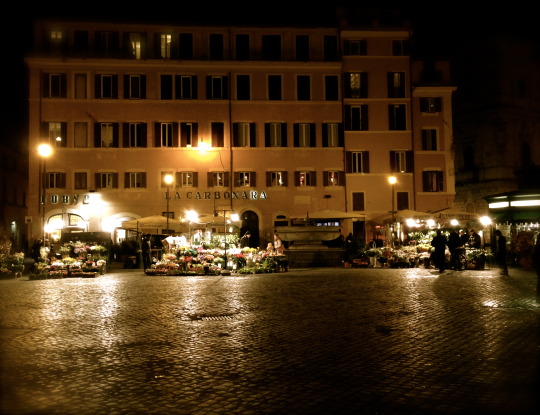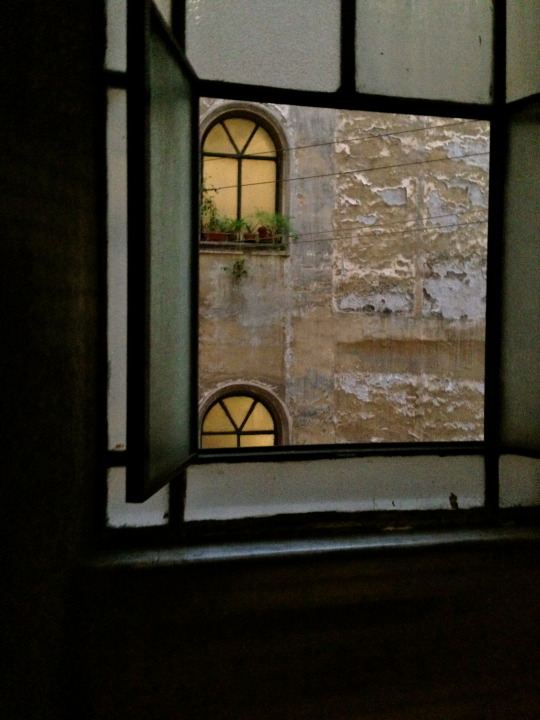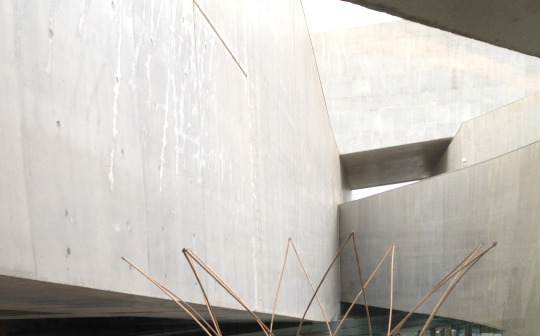Text
fragments

Returning to my Bennington routine has been strange and wonderful. From the day I landed in Fiumicino to the day I returned to this Vermont winter wonderland I had barely any time to breathe, let alone to reflect. It is becoming ever clearer to me as I look back that I was just passing through. It all feels as though I was riding on a high-speed train trying to make sense of miles of blurred panoramas.
It took a tremendous exertion of energy to try and piece together this place. I remember my first cappuccino, and my last. I remember the palm tree that stood tall in the center of our apartment complex’s courtyard. I remember the way the cobblestones seemed to soften and ooze in the rain. I remember the two old men who made the most delicious cheese I have ever tasted – “buona sera!” I remember cooking risotto for the first time on a two-burner electric stove with my roommates. I remember the sweet blood oranges fresh in the morning. I remember the warmth of Doria Pamphili as the rain pinched the windowpanes. I remember the awe I felt as I watched curators of the Galleria Borghese disperse a Giacometti collection among the Berninis. I remember the gelato – raspberry lemon and sage – my daily guilty pleasure. I remember how small I felt in the upper reaches of the Villa d’Este gardens – how refreshingly playful and childlike. I remember realizing that the world is just full of people. There will be a grumpy woman on the bus in the morning and there will be a child who makes a policeman smile on the job.
The rain made me long for the sun – to almost worship it when it graced the day with its lightness. Rome was incredible. Rome was suffocating. I had no space to breathe. I began to know the city but I wanted desperately to escape it.
My task as I embark on this term is to stop trying to make sense out of the blur, but to pull the stills that I managed to capture and weave them into my work as I continue my limited time here at Bennington. The Exeter Library (which I mentioned in a previous post) is the building I have chosen to analyze in Advanced Architecture this term.
I want so desperately to be able to sum my winter up in a beautiful and concise reflection, but I think this will come in time. This blog has taught me about the importance of fragments. I am often obsessed with creating a whole – a complete and finished piece. For this reason I often dismiss valuable fragments. Each week I was challenged by some overpowering thought. These thoughts bled into each other and will continue to color the work I am doing. The ability to reflect on those often-ignored fragments in this blog was freeing.
There is an exciting uncertainty that has come from this experience. I do not understand the world, but by understanding miniscule pieces of my own world, I can begin to shape that understanding. I am uncertain what Rome has done to change my life. Uncertainty is extremely difficult to embrace, but my understanding of this experience is ever-changing.
I cannot pretend that I am standing still. I am moving ever forward, piecing my world together from imperfect fragments of the past.
2 notes
·
View notes
Photo


wednesday january 29, 2014
villa giulia
0 notes
Photo



friday february 7, 2014
exploring a medieval town in the Italian country side - before formal "urban planning"
0 notes
Photo

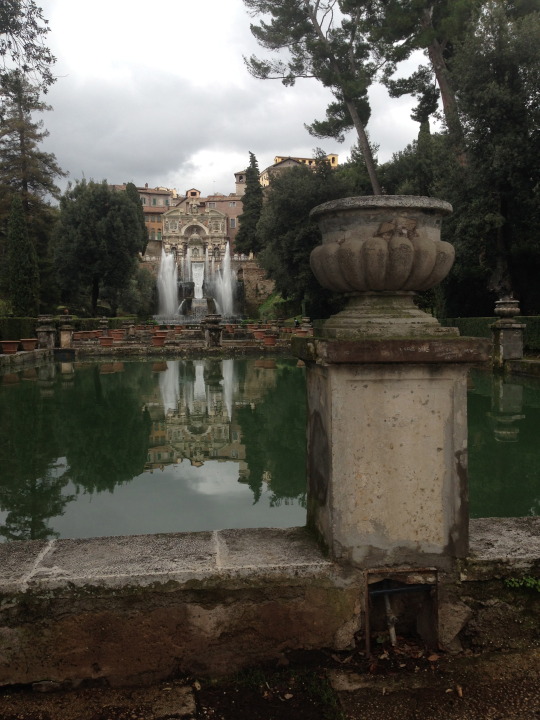
wednesday february 5, 2014
villa d'este (tivoli)
0 notes
Photo
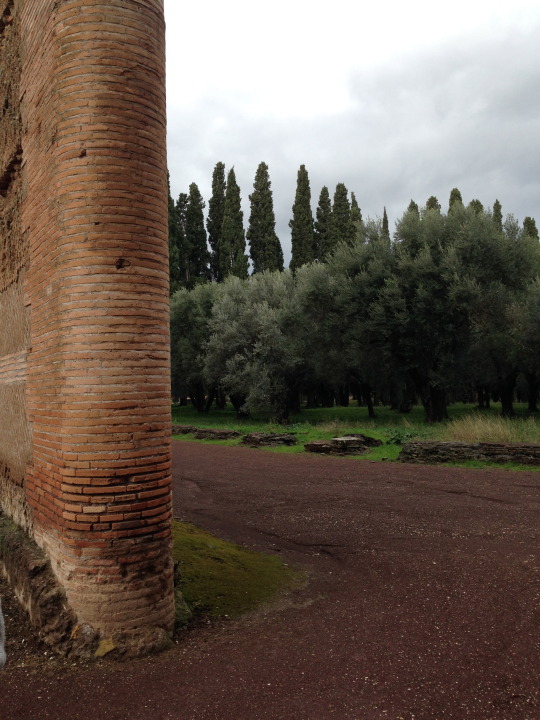

wednesday february 5, 2014
hadrian's villa (tivoli)
0 notes
Text
heavy
Our class at Hadrian's Villa on Wednesday:

As we tour the sites of Renaissance Rome in the context of 2014, we step into a narrative controlled by the powerful and talented few - the Farnese Family, Michelangelo, Raphael, Pope Sixtus - and realize that these figures are intimately intertwined. On our recent Villa visits, we continually see an obsession with forced perspective - trompe l'oiel friezes, circular spaces inside rectangular frames (Villa Farnese in Caprarola). Examples of forced perspective range in scale from a round column painted into an angular corner to deliberate carving of the urban fabric.
As influential individuals began to use urban planning as a tool to shape perceptions of power, medieval Rome adopted straight broad avenues. Pope Julius II planned Via Giulia, a street which pierces the center of Rome from Ponte Sisto (Pope Sixtus' bridge connecting either side of the Tiber) to San Giovanni dei Fiorentini.
In the past several days we have taken a tour through the Farnese family chronicle. As one of the most powerful families in Rome during the Renaissance, the Farnese family controlled much of how the city was viewed by the outside world. They also used urban planning to create deliberate connections through Rome between their strongest points of influence - Palazzo Farnese and Villa Farnesina. We also visited Villa Farnese in Caprarola. A straight avenue cuts through the center of this medieval town to reach the center of this enormous fortress-turned-villa.
My experiences and perceptions of those experiences are no doubt shaped by deliberate creations of perspective. As our time in Rome comes to an end, I am becoming aware of the heavy history carved deeply into the bones of this city.
1 note
·
View note
Text
bring a book to read in the light
I have been in Rome now for a week taking a drawing intensive class. Each morning we go to a different Roman site or museum to draw and then spend the afternoon in our studio space. Friday January 24th was our first full day. In the morning we toured Santa Maria della Pace with a few of our professors. We drew in the cloister - designed by Bramante - for about an hour. I felt like I hadn't drawn in a long time. I learned that Louis Khan's Exeter Library in New Hampshire was inspired by Bramante's cloister:

Santa Maria della Pace
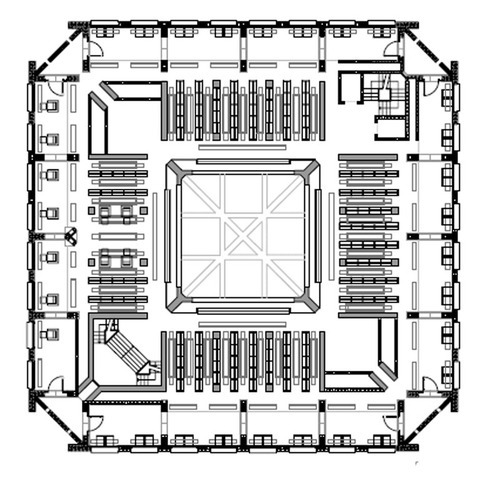
Exeter Library
Santa Maria was a monastery. Bramante designed the cloister space based on the human inhabitant - with seats built into the interior walls overlooking an open courtyard. The monks left their cells to study by the only source of light - the sun. Khan wanted to create the same open and meditative connection with sunlight at the core of his Library. The Exeter Library, while not open to the sky, is penetrated by a central square sunlit void. Inhabitants of Khan's library, as of Bramante's cloister, bring a book to read in the light - the built environment controlling inhabitant behavior.

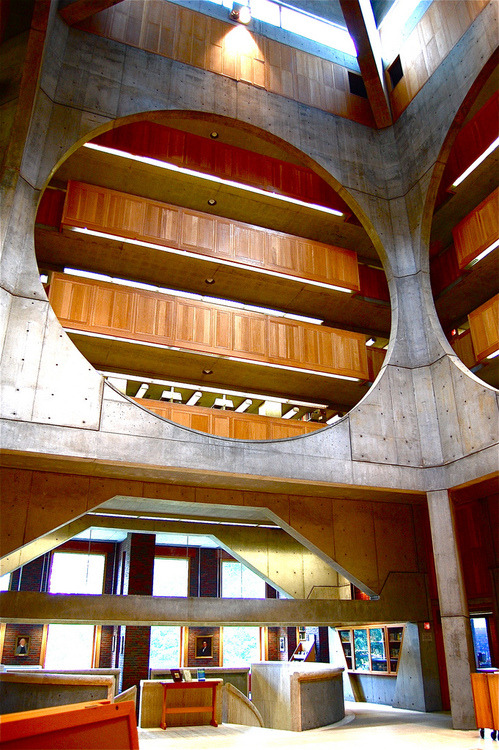
3 notes
·
View notes
Photo
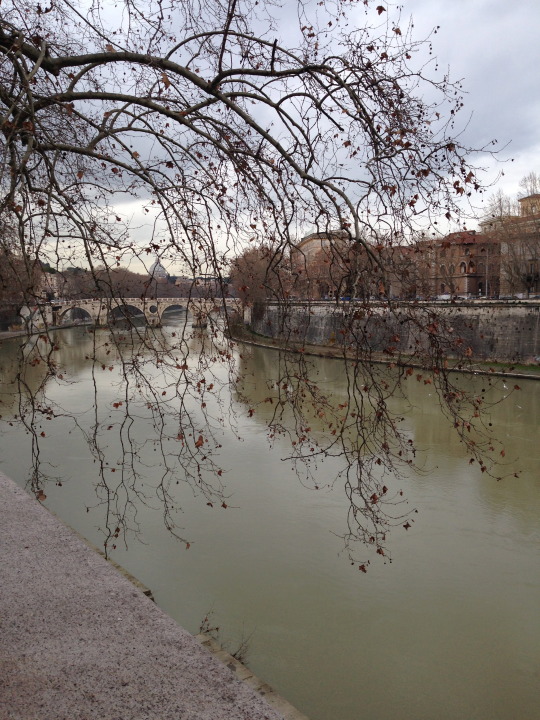
United with the Tiber at Piazza Tevere for the first time!
0 notes
Text
memorizing reality
I am able to locate myself at a point – an intersection within a city. But each point exists within a context – none are isolated. The worlds that we each construct consist, in large part, of memory.
I remember which subway stations smell like garbage, and which side of the street has scaffolding up the block. I focus on landmarks. But what is really there? Does a map represent a more objective reality? I get lost most every time I try to navigate with pedestrian GPS on my phone. To look at a map of a city and to walk in a city create distinct realities.

If I walk through a neighborhood that I have walked through many times before, I may miss an opportunity of discovery. On Wednesday I had lunch with my supervisor in the park. She showed me the oldest tree in New York City– 330 years old – at a corner of Washington Square Park.She discovered in a book, that the oldest tree in New York City was in her neighborhood; in a park she had walked through hundreds of times. The greatest discovery is sometimes masked by memory. Our environments are not static, and neither are our memories. Neither is entirely reliable, or entirely real.
2 notes
·
View notes


